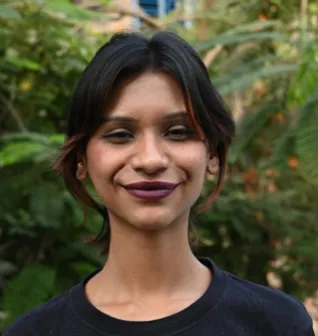-
CENTRES
Progammes & Centres
Location
The long-standing socio-economic marginalisation of India’s LGBTQ+ community goes beyond being a moral issue—it’s also an economic imperative

Image Source: Getty
The recent rollback of the USAID under Trump’s second term sent shockwaves through the global aid community, with ripple effects felt strongly among the queer or the LGBTQ+ community worldwide. India was no exception. One immediate consequence was the abrupt closure of the country’s first three transgender clinics. This led to the disruption of key medical services for counselling, hormone therapy and treating HIV of about 5,000 individuals.
While this is a setback - it also sets a significant opportunity for India to decolonise its approach to LGBTQ+ inclusion and weave the ‘pink economy’ into its growth story. This pink economy refers to the purchasing power of the queer community which is globally valued at approximately US $3.7 trillion. In India, the pink economy is estimated to have a purchasing power of US $168 billion remains largely untapped, due to societal stigma which hinders their economic inclusion. As a result, this community has remained dependent on international funding and is often presumed that Western narratives play a role in shaping these queer identities.
In India, the pink economy is estimated to have a purchasing power of US $168 billion remains largely untapped, due to societal stigma which hinders their economic inclusion.
A common misconception owed to ‘wokeism’, is that queer narratives are a Western import. However, South Asia with India has the richest history of the queer community in the world, where diverse sexual and gender identities are not just recognised but also celebrated. Ancient texts like the Kamasutra and Hindu epics such as the Ramayana and Mahabharata explicitly feature same-sex relationships and gender fluidity, while during the Mughal era, the hijra community held positions of power in royal courts. It was only in the colonial era that the status of the queer community plummeted, with the introduction of Section 377 in 1871, criminalising homosexuality and embedding seeds of homophobia into Indian society. Unfortunately, this legacy of Victorian morality outlived colonial rule and continues to shape public perceptions. However, in the last decade, India has tried making strides with the introduction of a ‘third gender’ in the 2011 Census, the Supreme Court’s 2018 decision to strike down Section 377, and the passing of the Transgender Persons (Protection of Rights) Act in 2019. While these strides made some progress in recognising the queer community, it didn’t help much in elevating the status of the LGBTQ+ community.
It is crucial to understand that legal recognition is only a part of the puzzle because, without structural frameworks in place, the queer community continues to remain socially and economically disenfranchised. India has an estimated queer population of and globally makes up approximately 18 percent of the global queer population. The queer community in India is heavily dependent on international donors, and yet a 2025 study finds that it still makes up only 1 percent of global LGBTQ+ funding.
An overreliance on international funding stems from the state’s constricted vision of the queer community. The Ministry of Social Justice and Empowerment launched the Support for Marginalized Individuals for Livelihood and Enterprise(SMILE) scheme in 2022, which includes two sub-schemes: the Central Sector Scheme for Comprehensive Rehabilitation for Welfare of Transgender Persons and the Central Sector Scheme for Comprehensive Rehabilitation of Persons Engaged in Begging. In 2025-26, the Ministry allocated US$ 1068.8 million in this budget to address education, skilling, medical facilities, rehabilitation and so on. Upon closer inspection, if this is to cater to an estimated 140 million queer community it remains grossly inadequate. Moreover, it reduces the queer community by looking at it only through the transgender community and therefore lacks meaningful impact. On the other hand, Indian corporates like Godrej and Deloitte have been actively working towards workplace inclusion for the queer community. Only recently was the Pride Fund launched standing at US $20 million. While these efforts are well-intentioned, it remains fragmented and lacks a holistic approach.
A 2024 study finds that less than 6 percent of transgender persons are in the formal workforce, and at least 56 percent of the LGBTQ+ community report discrimination in their white collared jobs.
Long-term sustainability requires government intervention and structural reforms to ensure a truly holistic approach to all at the national level. This is crucial as studies find that societal attitudes shape economic outcomes, and stigma and discrimination are costly to economies—directly impacting a country’s GDP. For the case of India, a World Bank study estimates that India loses between 0.1 percent to 1.7 percent of its GDP due to the exclusion of LGBTQ+ individuals, which translates to an economic loss of US $1.9 billion to US $30.8 billion annually. The status of the queer community in India reveals a distressing pattern where social stigma limits access to education and impacts the ability to secure decent work. A 2024 study finds that less than 6 percent of transgender persons are in the formal workforce, and at least 56 percent of the LGBTQ+ community report discrimination in their white collared jobs. In contrast, economic development and LGBTQ+ inclusion are mutually reinforcing.
Therefore, the long-standing socio-economic marginalisation of India’s LGBTQ+ community goes beyond being a moral issue—it’s also an economic imperative. To fully integrate the pink economy into the nation’s growth trajectory, India must shift from a donor-driven model to an investment-driven one.
The Indian government must go beyond looking at LGBTQ+ individuals through the lens of a ‘third gender’ or transgender persons only – and expand this space for other queer identities. Further research with data and development is necessary to understand how the economic inclusion of this community can contribute to higher economic growth. Data would especially be relevant in understanding the lived experiences of this community - capturing critical areas like health, education, employment, housing, and access to social security nets. On the basis on which a framework can be developed that is holistic and crosscutting to ensure their full active participation in India’s growth story.
An implementable roadmap must envision inclusive educational institutions, with emphasis on scholarships, skill enhancement and job training programmes. Business incubators and low-interest loans can financially empower LGBTQ+ entrepreneurs. At the same time, affordable housing and access to healthcare must be prioritised to ensure economic participation isn’t limited by social exclusion.
An implementable roadmap must envision inclusive educational institutions, with emphasis on scholarships, skill enhancement and job training programmes.
To fund this approach, a PPP (public, private and philanthropy) model is necessary. The government can set up a dedicated fund, with contributions from government contributions, impact investors, CSR funds and private players. An LGBTQ+ Economic Advisory Council should oversee these efforts, ensuring that funding reaches the right places and leads to measurable progress.
The withdrawal of USAID funding has brought to focus that India should have a self-sustaining framework for the queer community rather than relying on international funding. The narrative should be readjusted and realigned based on India’s queer heritage, a step back from the ‘woke package’. A balanced and pragmatic approach to queer inclusion is essential, one that moves beyond political binaries and instead frames it as a matter of social and economic integration. Simultaneously, legitimate grey areas such as identity misuse and sports policies must be fairly debated and addressed. Essentially, LGBTQ+ rights should not be pitted against women’s rights but rather seen as part of a broader framework for gender equity. This would be a tightrope walk— anchoring queer inclusion in both economic logic and historical legitimacy. It’s, however, an opportune moment for India to set a global precedent.
Sharon Sarah Thawaney is Executive Assistant to the Director of ORF Kolkata and CNED, Nilanjan Ghosh.
The views expressed above belong to the author(s). ORF research and analyses now available on Telegram! Click here to access our curated content — blogs, longforms and interviews.

Sharon Sarah Thawaney is the Executive Assistant to the Director - ORF Kolkata and CNED, Dr. Nilanjan Ghosh. She holds a Master of Social Work ...
Read More +
